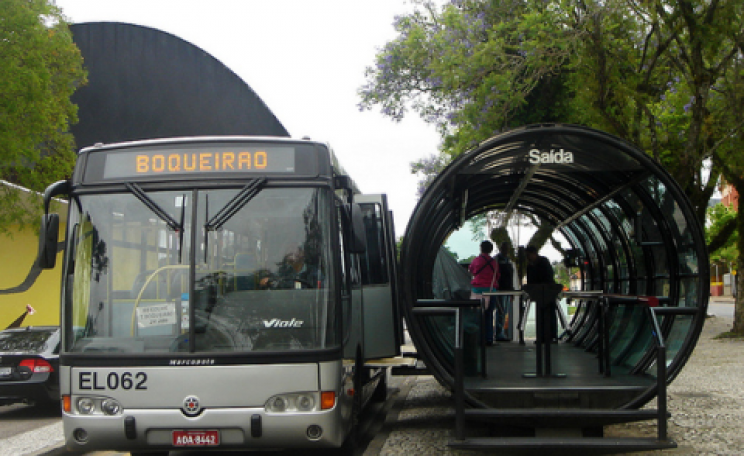Why doesn't every city develop such wonderful and impactful plans?
Atlanta is not known as a city with a progressive environmental agenda. Places like Portland, Oregon and Vancouver, British Columbia more often come to mind and regularly appear on 'top ten' lists of greenest cities and best places to live.
Yet the vision of sustainability carried in the hearts of many local residents found a voice in 2008 with newly elected Mayor Kasim Reed's Power to Change plan. Five years later, the vision is beginning to take root, bringing green relief to the sprawling metropolis.
All grassroots calls for change must eventually manifest in a tangible form to stay alive. Atlantans have long suffered from some of the worst air pollution of any city in the United States, compounded by the sultry, still air of the Deep South, and have spent millions of their tax dollars to bring the city into compliance with the federal Clean Air Act.
A 'green collar' takes shape
Now one of the most ambitious urban planning projects in the country is underway to curb future environmental (and health) costs in Georgia's car-centric capital. The Atlanta Beltline is a green collar of interconnected open space, alternative transit routes and sustainably-designed developments encircling the downtown core.
The 25 year, $2.8 billion dollar plan is a collaboration among government agencies, not-for-profit groups and private enterprises to reprogram the city for a lower carbon footprint.
Following an abandoned rail corridor, the Beltline will feature a desperately needed light rail loop through 45 of the cities most congested neighborhoods and 33 miles of new bike and pedestrian paths, linking large populations of the city to the places where they work, learn and play.
Large nuggets of a planned 1,300 acre linear park are already in place along the corridor that will serve as a backyard for 5,600 units of low income housing, also underway. The Beltline traverses both upscale and impoverished communities, breaking down the historic barriers between them and highlighting the power of participatory urban planning.
An optimistic vision and a 'can do' attitude
Why doesn't every city develop such wonderful and impactful plans? The derelict, underutilized land along the old rail bypass offered a unique canvas for the vision of the Beltline. But it was an optimistic approach to the economic vitality of sustainable choices that is droving the project from a pipe dream to a bustling reality.
Urban planners at the City of Atlanta carved out a tax allocation district (TAD) to grease the wheels of the project at the outset. The basic premise is to use projected increases in property values, and the associated tax income for the municipality, to pay for new infrastructure that would not otherwise be able to secure financing.
Why doesn't every city develop such wonderful and impactful plans?
TADs are often utilized to build parking decks and shopping centers, but the Beltline TAD is an expression of a city banking on a sustainable future, rather than simply lining the pockets of developers.
What is so fascinating about the Beltline is how it is evolving from a small grassroots movement to change the face of one the country's most environmentally-distressed metropolises.
Back in the late 90s, Ryan Gravel, then a graduate student at the Georgia Institute of Technology's urban planning program, was looking for ideas for his thesis project. Poring over an historic map of the city's original railway infrastructure, he saw the circular line around downtown Atlanta and the proverbial light bulb went off in his head.
Gravel was steeped in Ebenezer Howard's 'Garden Cities' theory of urban planning and realized the corridor could be used to heal some of the wounds of the city's environmental atrocities. After publishing his thesis, the idea caught fire with local cycling and sustainability activists, followed by a small group of urban planners and a few forward thinking politicians - the rest, as they say, is history.
Hitting sustainability goals
As the Beltline vision enters adolescence, Mayor Reed is checking his sustainability goals off the list. Goal #1 was to reduce greenhouse gas emission within city limits by 25% before 2020, 40% by 2030 and 80% by 2050.
In 2013, the city is halfway to the first benchmark, with a 12.5% reduction from 2008 levels. Another goal is to protect at least 10 acres of green space for every 1000 residents. With about 500,000 people residing in city limits, that translates to 5,000 acres, a quarter of which is already accounted for in the emerging Beltline park system.
Where is all that land coming from in the middle of the bustling city? The answer is yet another testament to the positive environmental impact of Atlanta's blossoming urban repair agenda: 1,100 acres of toxic industrial land along the Beltline are being remediated and returned to the hands of nature for future generations to enjoy.
Brian Barth is a freelance writer and landscape architect. Particular interests include the interdependence of people, plants, and the Earth; communicating the complex systems of design, urban ecology, and urban planning to a general audience; the dynamics of development patterns and ecosystem integrity in urban areas; and engaging public awareness in the ecological processes of a given site.





